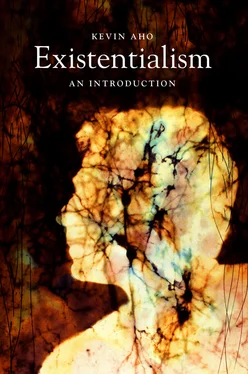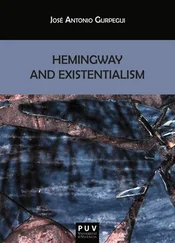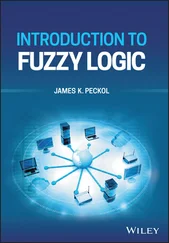Kevin Aho - Existentialism - An Introduction
Здесь есть возможность читать онлайн «Kevin Aho - Existentialism - An Introduction» весь текст электронной книги совершенно бесплатно (целиком полную версию без сокращений). В некоторых случаях можно слушать аудио, скачать через торрент в формате fb2 и присутствует краткое содержание. Год выпуска: 2013, ISBN: 2013, Издательство: Polity, Жанр: Философия, на английском языке. Описание произведения, (предисловие) а так же отзывы посетителей доступны на портале библиотеки ЛибКат.
- Название:Existentialism: An Introduction
- Автор:
- Издательство:Polity
- Жанр:
- Год:2013
- ISBN:978-0745651422
- Рейтинг книги:3 / 5. Голосов: 1
-
Избранное:Добавить в избранное
- Отзывы:
-
Ваша оценка:
- 60
- 1
- 2
- 3
- 4
- 5
Existentialism: An Introduction: краткое содержание, описание и аннотация
Предлагаем к чтению аннотацию, описание, краткое содержание или предисловие (зависит от того, что написал сам автор книги «Existentialism: An Introduction»). Если вы не нашли необходимую информацию о книге — напишите в комментариях, мы постараемся отыскать её.
Existentialism: An Introduction
Existentialism: An Introduction — читать онлайн бесплатно полную книгу (весь текст) целиком
Ниже представлен текст книги, разбитый по страницам. Система сохранения места последней прочитанной страницы, позволяет с удобством читать онлайн бесплатно книгу «Existentialism: An Introduction», без необходимости каждый раз заново искать на чём Вы остановились. Поставьте закладку, и сможете в любой момент перейти на страницу, на которой закончили чтение.
Интервал:
Закладка:
Embodiment
When it comes to accounts of embodiment, twentieth-century existentialists are largely indebted to Husserl's work in Ideas II (1912) and his seminal distinction between two senses of the body, the quantifiable “physical body” ( Körper ) and the “lived body” ( Leib ) (Husserl 1989, 151–169). The notion of Körper is derived largely from Cartesian and Newtonian science, where the body is defined as res extensa , as an object that has a material composition, a determinate shape and boundary, is causally determined, and occupies a specific spatial location. In his Meditations (1641), Descartes offers the classic description:
By body, I understand all that is capable of being bounded by some shape, of being enclosed in a place, and of filling up a space in such a way as to exclude any other body from it … of being moved in several ways, not, of course, by itself, but by whatever impinges upon it. (1998, 64)
On this account any physical object is an example of Körper , but this definition does not help us understand how the body is lived, felt, or experienced. With etymological roots in the German words for ‘life’ ( Leben ) and ‘lived experience’ ( Erlebnis ), the lived body is not a physical object that can be studied from a perspective of scientific detachment, and, therefore, it is not to be understood as a thing or possession that I have. It refers, rather, to the first-person experiences, perceptions, and feelings of my own body . In this sense, I do not ‘have’ a body; as Marcel writes, “I am my body” (1950, 100, my emphasis), and I can never gain objective knowledge of my body because I am already living through it; it is what I am experiencing and sensing immediately and spontaneously at this moment. This is why, as Sartre says, “the body is lived and not known ” (1956, 427). I can certainly perceive and know my material body — my height, weight, spatial location, etc. — from a position of detachment, but I cannot perceive my living body in this way. The existentialists are suggesting that my experiences are never encapsulated or self-contained; they are always bound up in the concrete situation or ‘life-world’ ( Lebenswelt ) that I am engaged in and responding to. It is this experiential intertwining that makes it impossible for me to perceive my body as a discrete object because I am already pre-reflectively situated and oriented in the world on the basis of my body. Thus, I cannot get behind or “distance myself” from it; it always “stands in my way” as the “zero point” of all my perceptions and orientations (Husserl 1989, 166–167).
To say ‘I am my body,’ then, is to say that my thoughts, perceptions, feelings, and experiences are situated and perspectival; they are entwined in the world “through the medium of my body” (Merleau-Ponty 1962, 82). Things matter to me in the ways that they do because of the unique “mediation of [my] bodily experience” (203). On this account, there is no way to distinguish “the world” from my “experience of the world” (Moran 2000, 422). How I perceive and feel about things is already colored by my embodied situation, one that would include aspects such as sexual orientation, physical ability, temperament, upbringing, or any other aspect of my bodily being-in-the-world. The fact that I spontaneously perceive a mountain as climbable, a colleague as trustworthy, or a social gathering as something to be avoided is due to the fact that I am situated and incarnated in a way that is irreducibly complex and indeterminate. This means that the self-conscious choices and actions that define us and make us who we are always take place against the situated background of our embodiment. And, for the existentialists, it is the ongoing struggle we live through in choosing to interpret or take a stand on our embodied situation that constitutes what it means to be a self. The self, understood this way, is a tension between the limitations and constraints of our embodiment and how we choose to interpret and give meaning to these limitations.
The self as a tension
From the previous discussion we see that the self is not a thing but a kind of embodied agency shaped by our meaning-giving choices and actions. Here, the existentialist conception of selfhood is strongly influenced by Kant, who suggests that human behavior can be understood in one of two ways, either deterministically from the mechanistic perspective of natural science or from the perspective of moral agency that regards human behavior in terms of freedom and responsibility. The former view treats the human being as a theoretical object whose behavior is determined and, like that of any other entity in the natural world, can be predicted and explained on the basis of causal laws. The latter view regards the human being as a responsible agent and the creator of his or her own life (Korsgaard 1989, 119–120). Given this distinction, existentialists generally do not deny that there are determinate facts about being human. It is a fact, for instance, that I am equipped with anatomical body parts, that I have a particular weight and height and a specific skeletal structure, and that I was born in a particular time and place. But it is also a fact that I am a professor and a husband. Being a professor and a husband, however, cannot be captured by means of the same descriptions that we attribute to objects in nature. They are not objective states of affairs but ‘ ways of existing ’ or ‘ being-in-the-world ,’ a composite of actions and choices I make that are embedded in a situation where being a professor and a husband are possibilities that matter to me. Heidegger clarifies this by distinguishing between objective “facts” ( Tatsachen ) and the “Facts” ( Fakta ) that pertain exclusively to human existence (1962, 82; see Blattner 2006, 44). The latter, our ‘facticity’ ( Faktizität ), is a reference to the embodied situation that we are engaged in, a situation that limits and constrains us in certain ways. This situation would include such things as our sexuality, our physicality, and our genetic code, but also our sociocultural context, our geographical location, and our history. For the existentialists, humans are unique in terms of the factical determinations that limit us because we have the capacity to self-consciously reflect on these limits and make decisions regarding how to deal with them. The structure of existence, then, is understood in terms of a struggle or tension between ‘facticity’ (our situated givenness) on the one hand and ‘transcendence’ (our ability to surpass our givenness through our self-conscious actions and choices) on the other. It is for this reason that Ortega y Gasset describes the human being as “a kind of ontological centaur, half immersed in nature, half transcending it” (1941, 111). We are determined by our nature and embodiment but are simultaneously endowed with the freedom to interpret it and take action in the face of it. These interpretations endow our situation with meaning, and these meanings in turn shape the direction of the choices and interpretations we make in the future. In other words, I make myself who I am only on the basis of the concrete ways in which I engage this tension.
What this means is that human beings, unlike animals and infants, do not always act on the basis of causal necessity, mechanically responding to immediate needs and desires. We are self-conscious beings or ‘being-for-itself’ who have the ability to transcend these needs and desires by embodying an evaluative or self-reflective concern about them and coming to grips with how acting on these desires shapes our identity and sense of who we are. The American philosopher Harry Frankfurt explains this view by distinguishing between ‘first-order’ and ‘second-order’ desires. “Besides wanting and choosing and being moved to do this or that,” writes Frankfurt, “men may also want to have (or not to have) certain desires and motives. They are capable of wanting to be different, in their preferences and purposes, from what they are” (1971, 7). This is what distinguishes humans from other animals. Animals and infants have the capacity for ‘first-order desires’ or ‘desires of the first order,’ which are simply desires to do or not to do one thing or another. But only humans have ‘second-order desires,’ that is, we have the unique capacity to care about, reflect on, and evaluate our first-order desires in a way that shapes us in becoming the distinctive kinds of selves that we are. On this account, for instance, my strong first-order desire for alcohol or cigarettes can be moderated by a higher second-order desire to be a sober and healthy person for the sake of my self-interpretation as a healthy and responsible father who wants to be present for his children. And this second-order volition is not causally determined; it is free, an expression of will that orients me in the world in a particular way and guides me toward future projects and identities that I seek to realize in creating the person I want to be.
Читать дальшеИнтервал:
Закладка:
Похожие книги на «Existentialism: An Introduction»
Представляем Вашему вниманию похожие книги на «Existentialism: An Introduction» списком для выбора. Мы отобрали схожую по названию и смыслу литературу в надежде предоставить читателям больше вариантов отыскать новые, интересные, ещё непрочитанные произведения.
Обсуждение, отзывы о книге «Existentialism: An Introduction» и просто собственные мнения читателей. Оставьте ваши комментарии, напишите, что Вы думаете о произведении, его смысле или главных героях. Укажите что конкретно понравилось, а что нет, и почему Вы так считаете.












